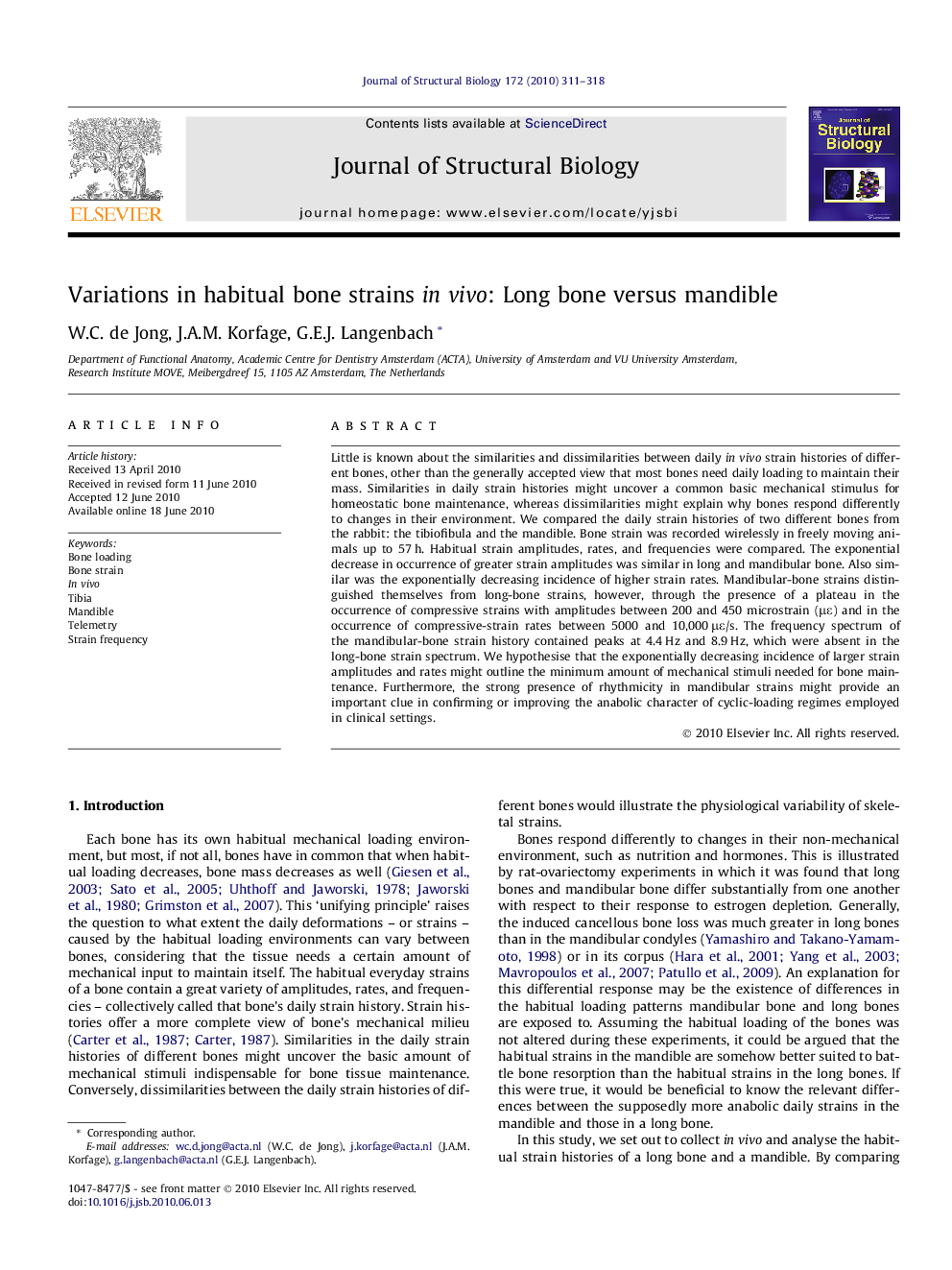| Article ID | Journal | Published Year | Pages | File Type |
|---|---|---|---|---|
| 5914946 | Journal of Structural Biology | 2010 | 8 Pages |
Abstract
Little is known about the similarities and dissimilarities between daily in vivo strain histories of different bones, other than the generally accepted view that most bones need daily loading to maintain their mass. Similarities in daily strain histories might uncover a common basic mechanical stimulus for homeostatic bone maintenance, whereas dissimilarities might explain why bones respond differently to changes in their environment. We compared the daily strain histories of two different bones from the rabbit: the tibiofibula and the mandible. Bone strain was recorded wirelessly in freely moving animals up to 57 h. Habitual strain amplitudes, rates, and frequencies were compared. The exponential decrease in occurrence of greater strain amplitudes was similar in long and mandibular bone. Also similar was the exponentially decreasing incidence of higher strain rates. Mandibular-bone strains distinguished themselves from long-bone strains, however, through the presence of a plateau in the occurrence of compressive strains with amplitudes between 200 and 450 microstrain (με) and in the occurrence of compressive-strain rates between 5000 and 10,000 με/s. The frequency spectrum of the mandibular-bone strain history contained peaks at 4.4 Hz and 8.9 Hz, which were absent in the long-bone strain spectrum. We hypothesise that the exponentially decreasing incidence of larger strain amplitudes and rates might outline the minimum amount of mechanical stimuli needed for bone maintenance. Furthermore, the strong presence of rhythmicity in mandibular strains might provide an important clue in confirming or improving the anabolic character of cyclic-loading regimes employed in clinical settings.
Related Topics
Life Sciences
Biochemistry, Genetics and Molecular Biology
Molecular Biology
Authors
W.C. de Jong, J.A.M. Korfage, G.E.J. Langenbach,
